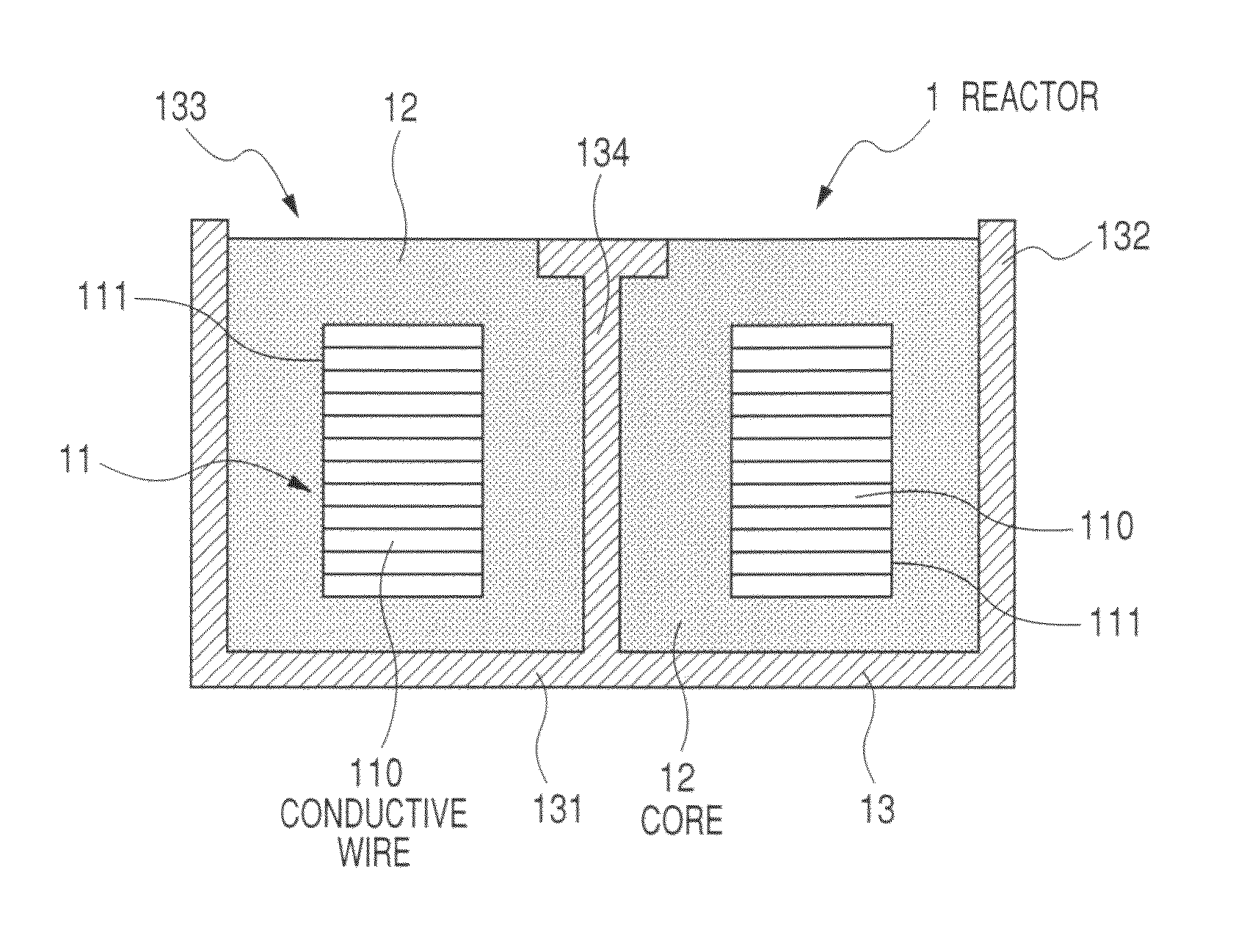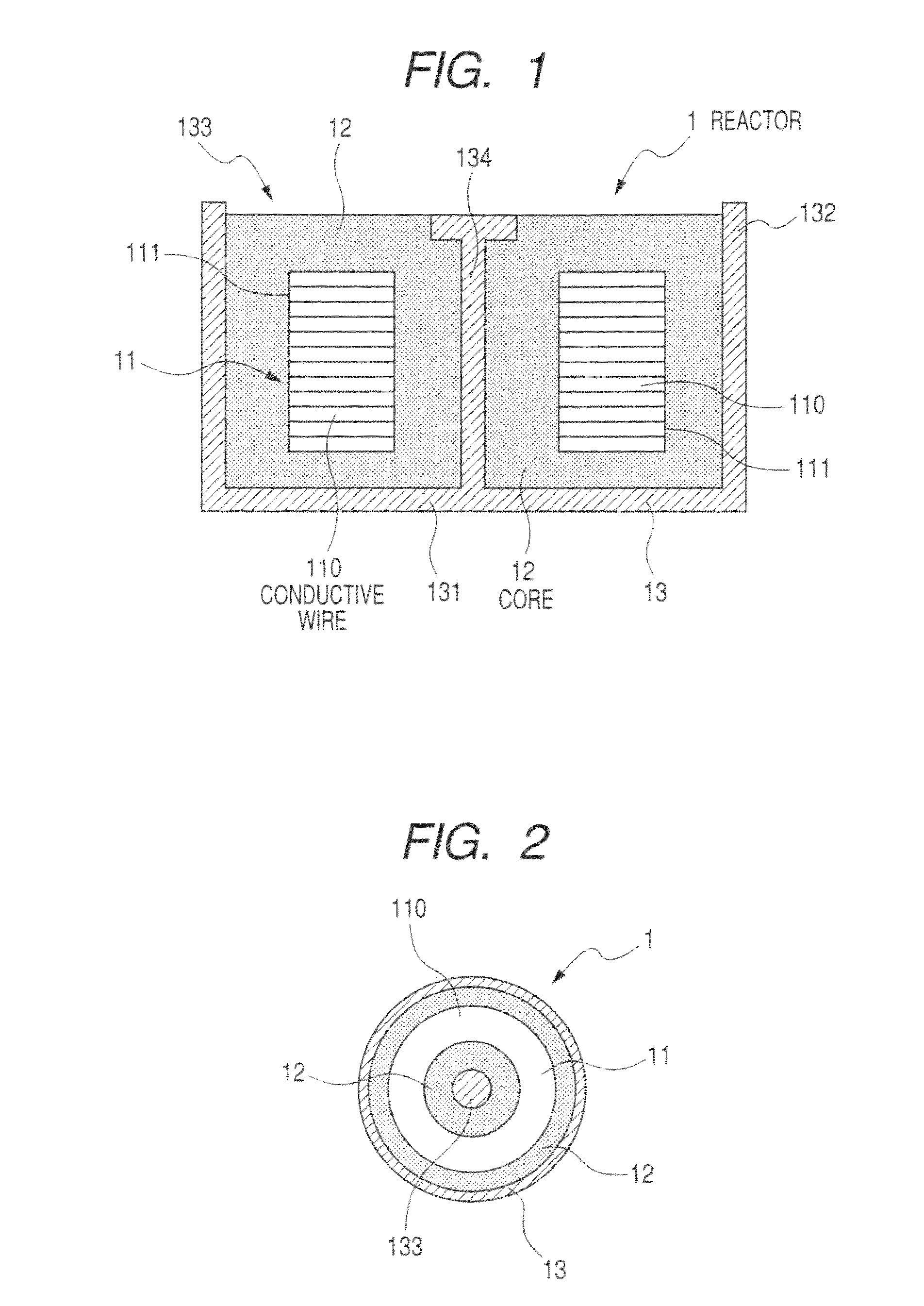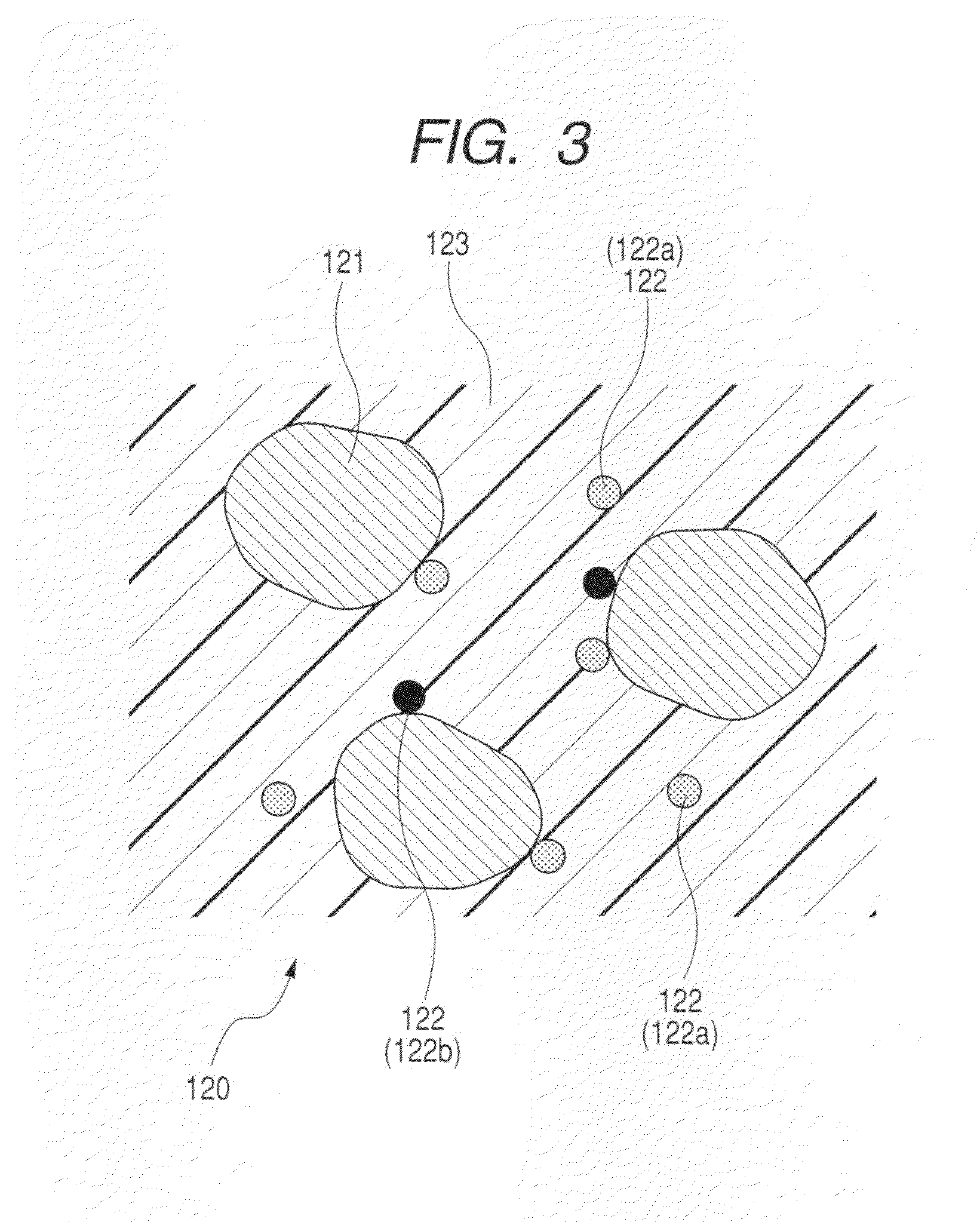Reactor and method of producing the reactor
a reactor and reactor technology, applied in the direction of transformer/inductance magnetic cores, magnets, magnetic bodies, etc., can solve the problems of generating cracks in the reactor, core breaks, conventional reactors have a following drawback, etc., to reduce stress, reduce the elastic modulus of the entire core, and reduce the stress
- Summary
- Abstract
- Description
- Claims
- Application Information
AI Technical Summary
Benefits of technology
Problems solved by technology
Method used
Image
Examples
first embodiment
[0030]A description will be given of a reactor according to a first embodiment of the present invention with reference to FIG. 1 to FIG. 4A, FIG. 4B, and FIG. 4C, and FIG. 7.
[0031]FIG. 1 is a vertical cross-sectional view showing the reactor 1 according to the first embodiment of the present invention. FIG. 2 is a top view of the reactor 1 according to the first embodiment shown in FIG. 1.
[0032]As shown in FIG. 1 and FIG. 2, the reactor 1 is comprised of a coil 11 and a core 12. The coil 11 is made by winding a flat type conductive wire 110. The coil 11 generates magnetic flux when a current flows therein. The core 12 is placed in an inside area and an outside area of the coil 11 in a container (or a case) 13.
[0033]FIG. 3 is a view showing a detailed structure of the core 12 in the reactor 1 according to the first embodiment shown in FIG. 1. As shown in FIG. 3, the core 12 is made by solidifying a magnetic-powder resin mixture 120. This magnetic-powder resin mixture 120 is composed ...
second embodiment
[0087]A description will be given of the second embodiment of the present invention with reference to FIG. 5 and FIG. 6.
[0088]FIG. 5 is a graph showing a relationship between a breaking stress to be applied to the core 12 and the number of thermal cycle tests of the reactor 1 according to the second embodiment of the present invention. FIG. 6 is a graph showing a relationship between a generated stress in the core 12 and the elastic modulus of the core 12 in the reactor 1 according to the second embodiment of the present invention.
[0089]The second embodiment shows the relationship between a stress and an elastic modulus of the core in test samples (various types of reactors) as the results of thermal cycle tests.
[0090]In the second embodiment, various types of reactors as test samples having a different elastic modulus were prepared. Those test samples were cooled to minus 40 degrees (−40° C.), and heated to 150 degrees (150° C.). The above cycle (as thermal cycle test) of cooling a...
PUM
| Property | Measurement | Unit |
|---|---|---|
| elastic modulus | aaaaa | aaaaa |
| particle size | aaaaa | aaaaa |
| elastic modulus | aaaaa | aaaaa |
Abstract
Description
Claims
Application Information
 Login to View More
Login to View More - R&D
- Intellectual Property
- Life Sciences
- Materials
- Tech Scout
- Unparalleled Data Quality
- Higher Quality Content
- 60% Fewer Hallucinations
Browse by: Latest US Patents, China's latest patents, Technical Efficacy Thesaurus, Application Domain, Technology Topic, Popular Technical Reports.
© 2025 PatSnap. All rights reserved.Legal|Privacy policy|Modern Slavery Act Transparency Statement|Sitemap|About US| Contact US: help@patsnap.com



